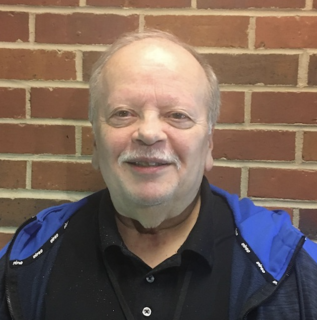Combinatorics is an area of mathematics primarily concerned with counting, both as a means and an end in obtaining results, and certain properties of finite structures. It is closely related to many other areas of mathematics and has many applications ranging from logic to statistical physics and from evolutionary biology to computer science.

Discrete mathematics is the study of mathematical structures that can be considered "discrete" rather than "continuous". Objects studied in discrete mathematics include integers, graphs, and statements in logic. By contrast, discrete mathematics excludes topics in "continuous mathematics" such as real numbers, calculus or Euclidean geometry. Discrete objects can often be enumerated by integers; more formally, discrete mathematics has been characterized as the branch of mathematics dealing with countable sets. However, there is no exact definition of the term "discrete mathematics".
Combinatorics is a branch of mathematics concerning the study of finite or countable discrete structures.

In mathematics, a composition of an integer n is a way of writing n as the sum of a sequence of (strictly) positive integers. Two sequences that differ in the order of their terms define different compositions of their sum, while they are considered to define the same partition of that number. Every integer has finitely many distinct compositions. Negative numbers do not have any compositions, but 0 has one composition, the empty sequence. Each positive integer n has 2n−1 distinct compositions.
In mathematics, computational group theory is the study of groups by means of computers. It is concerned with designing and analysing algorithms and data structures to compute information about groups. The subject has attracted interest because for many interesting groups (including most of the sporadic groups) it is impractical to perform calculations by hand.
Combinatorics on words is a fairly new field of mathematics, branching from combinatorics, which focuses on the study of words and formal languages. The subject looks at letters or symbols, and the sequences they form. Combinatorics on words affects various areas of mathematical study, including algebra and computer science. There have been a wide range of contributions to the field. Some of the first work was on square-free words by Axel Thue in the early 1900s. He and colleagues observed patterns within words and tried to explain them. As time went on, combinatorics on words became useful in the study of algorithms and coding. It led to developments in abstract algebra and answering open questions.
In combinatorial mathematics and theoretical computer science, a permutation pattern is a sub-permutation of a longer permutation. Any permutation may be written in one-line notation as a sequence of digits representing the result of applying the permutation to the digit sequence 123...; for instance the digit sequence 213 represents the permutation on three elements that swaps elements 1 and 2. If π and σ are two permutations represented in this way, then π is said to contain σ as a pattern if some subsequence of the digits of π has the same relative order as all of the digits of σ.

Ronald James Gould is an American mathematician specializing in combinatorics and graph theory. He is a Goodrich C. White professor emeritus in the Emory University Department of Mathematics.

In combinatorics, the Schröder–Hipparchus numbers form an integer sequence that can be used to count the number of plane trees with a given set of leaves, the number of ways of inserting parentheses into a sequence, and the number of ways of dissecting a convex polygon into smaller polygons by inserting diagonals. These numbers begin

In combinatorial mathematics, a Stirling permutation of order k is a permutation of the multiset 1, 1, 2, 2, ..., k, k with the additional property that, for each value i appearing in the permutation, the values between the two copies of i are larger than i. For instance, the 15 Stirling permutations of order three are

Miklós Bóna is an American mathematician of Hungarian origin.
Rodica Eugenia Simion was a Romanian-American mathematician. She was the Columbian School Professor of Mathematics at George Washington University. Her research concerned combinatorics: she was a pioneer in the study of permutation patterns, and an expert on noncrossing partitions.

Andrei Dmitrievich Polyanin is a Russian mathematician. He is a creator and Editor-in-Chief of EqWorld.

In computational group theory, a black box group is a group G whose elements are encoded by bit strings of length N, and group operations are performed by an oracle. These operations include:
Michael Eaton Gage is a mathematician who works as a professor of mathematics at the University of Rochester. He is known for his work on the curve-shortening flow, and in particular for the Gage–Hamilton–Grayson theorem, proved by Gage with Richard S. Hamilton and Matthew Grayson, which describes the behavior of any smooth Jordan curve under the curve-shortening flow. He is also one of the original developers of the WeBWorK online homework delivery system.

Zvezdelina Entcheva Stankova is a professor of mathematics at Mills College and a teaching professor at the University of California, Berkeley, the founder of the Berkeley Math Circle, and an expert in the combinatorial enumeration of permutations with forbidden patterns.
Analytic Combinatorics is a book on the mathematics of combinatorial enumeration, using generating functions and complex analysis to understand the growth rates of the numbers of combinatorial objects. It was written by Philippe Flajolet and Robert Sedgewick, and published by the Cambridge University Press in 2009. It won the Leroy P. Steele Prize in 2019.

Ian Murray Wanless is a professor in the School of Mathematics at Monash University in Melbourne, Australia. His research area is combinatorics, principally Latin squares, graph theory and matrix permanents.
Silvia Heubach is a German-American mathematician specializing in enumerative combinatorics, combinatorial game theory, and bioinformatics. She is a professor of mathematics at California State University, Los Angeles.










